Abstract
This epidemiological study was of 18,728 employees at 14 United States facilities producing sterilised medical supplies and spices, who were potentially exposed to ethylene oxide (EO) for at least 90 days. The mortality of the cohort was studied to the end of 1988. A total of 1353 deaths was identified. The cohort had a significantly lower mortality than the general population from all causes, all cancers, and non-malignant diseases. In the entire cohort, mortality was not significantly increased from any of the cancer sites examined. In particular, no significant increase in mortality was found in the cancer sites of interest based on previous studies--namely, stomach, leukaemia (including major specific cell types), pancreas, and brain. The lack of an increased mortality for these cancer sites was further strengthened by the lack of a dose-response relation with duration of employment and latency. Among the men, a statistically significant increase in mortality from non-Hodgkin's lymphoma was found. There was no indication for a dose-response relation for non-Hodgkin's lymphoma and no specific job categories seemed to be responsible for the increase. Among the women, a deficit of non-Hodgkin's lymphoma was found, which was not consistent with the finding in the men. Therefore, the increase among the men did not seem to be related to exposure to EO.
Full text
PDF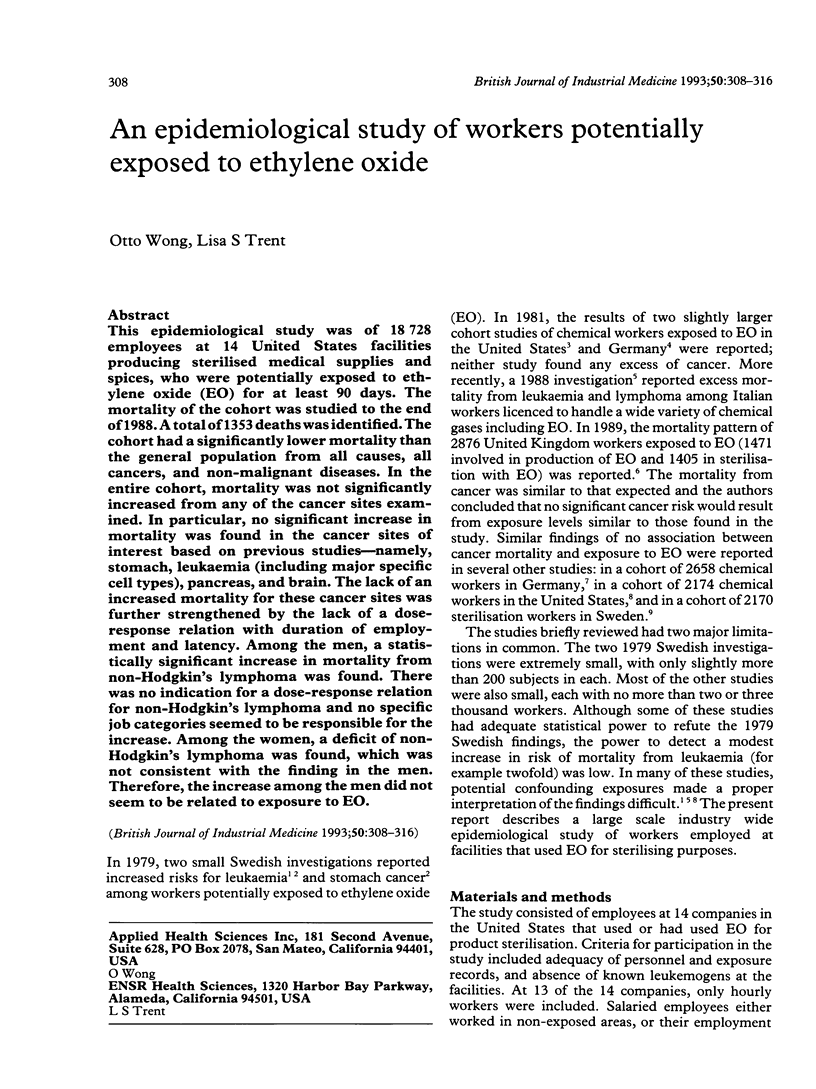
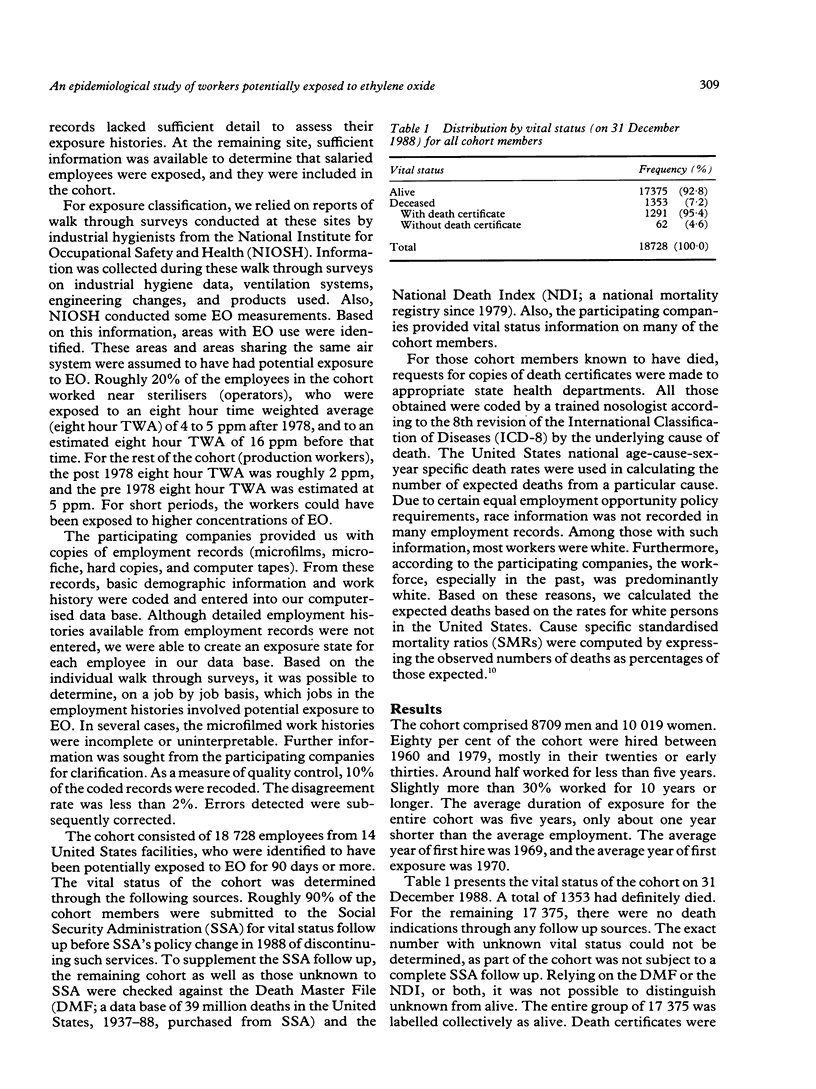
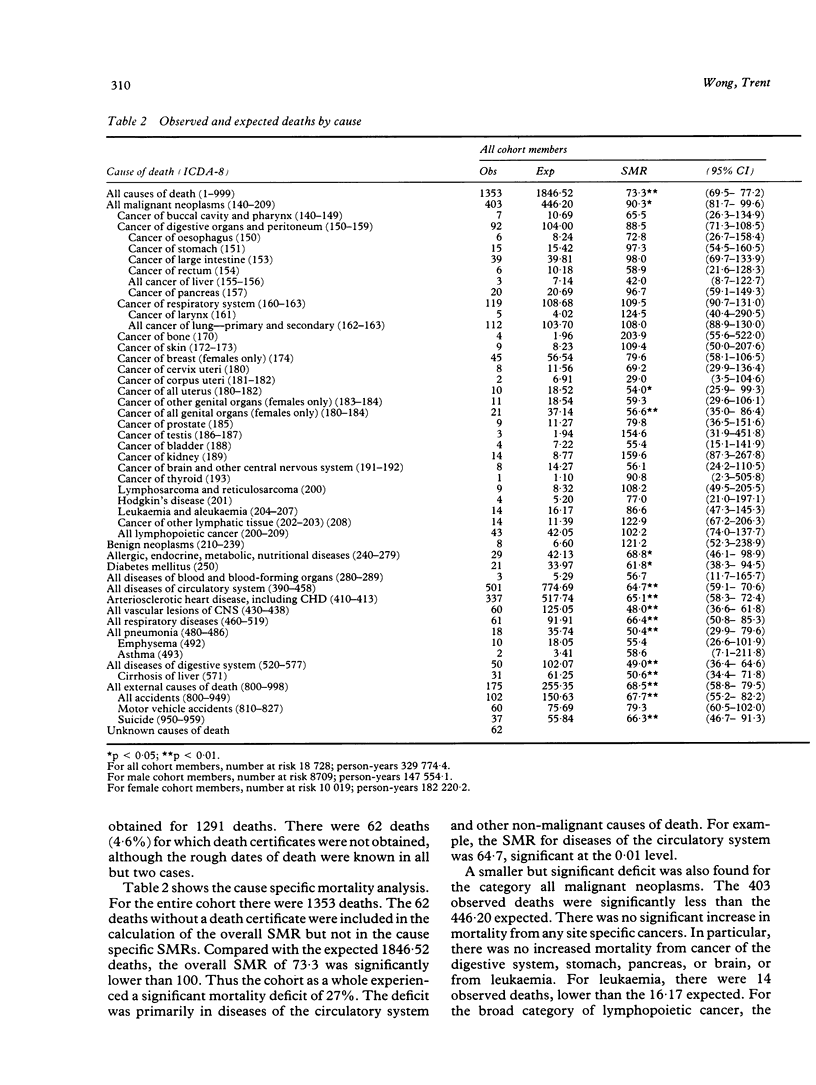
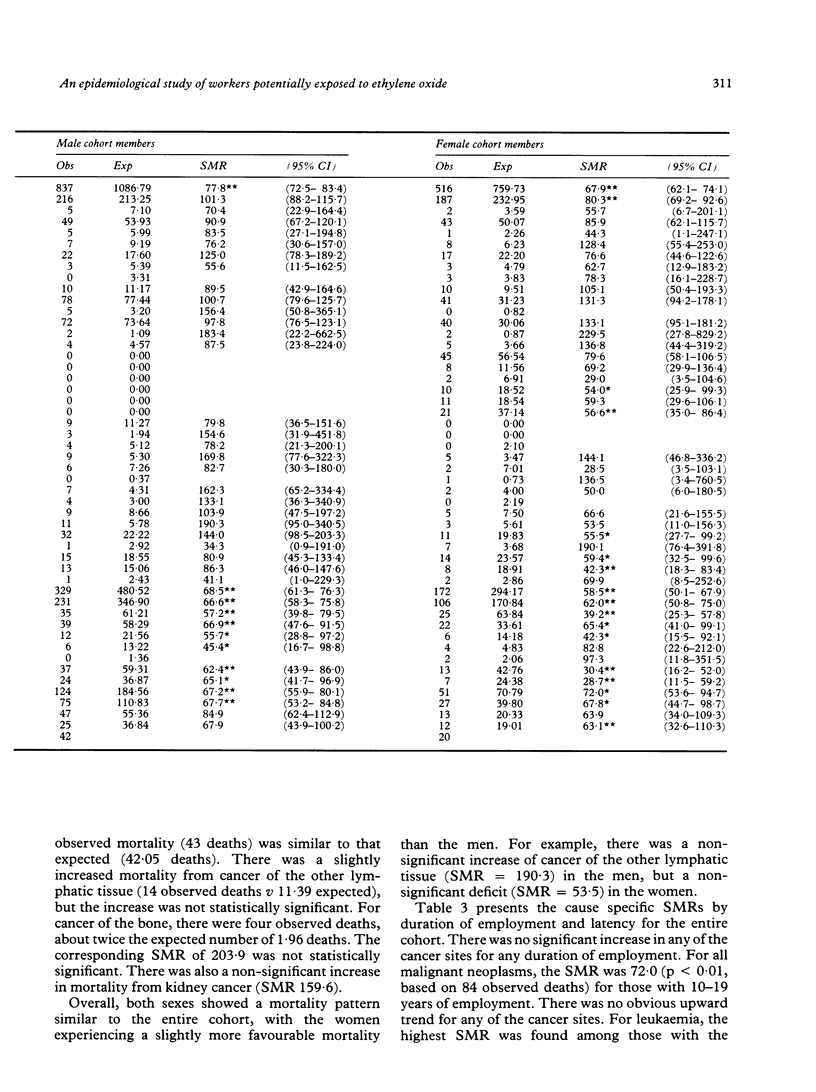
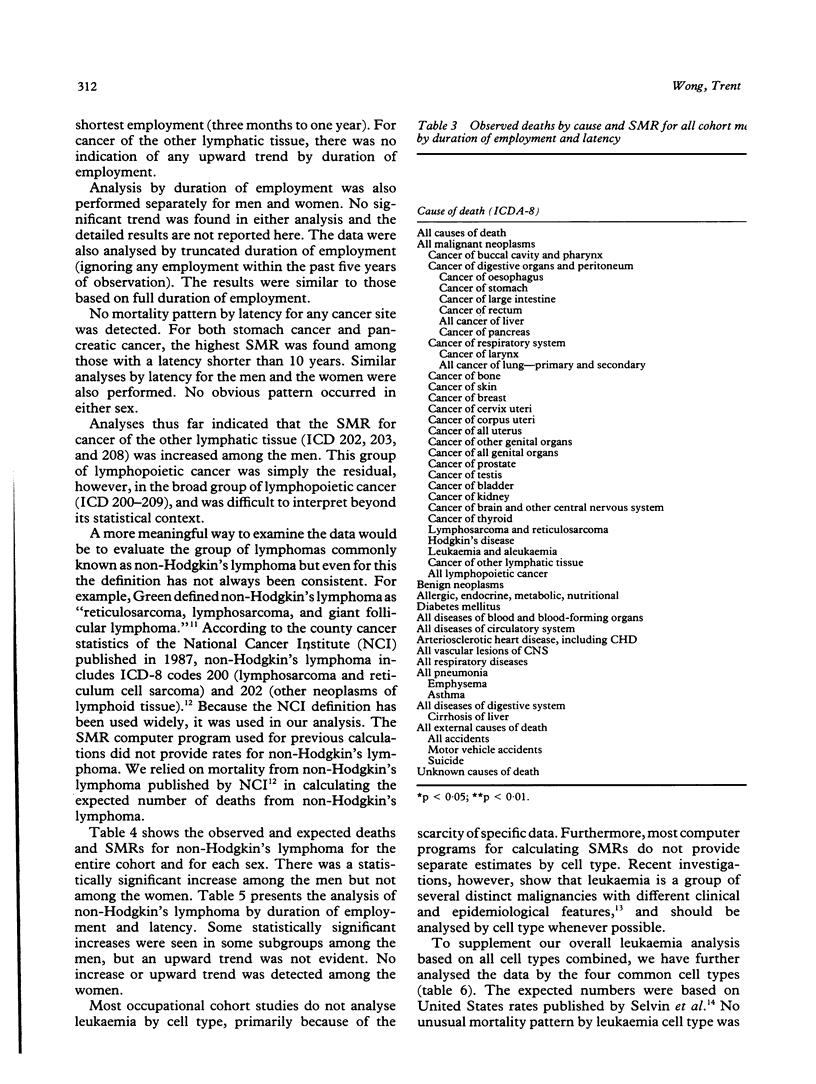
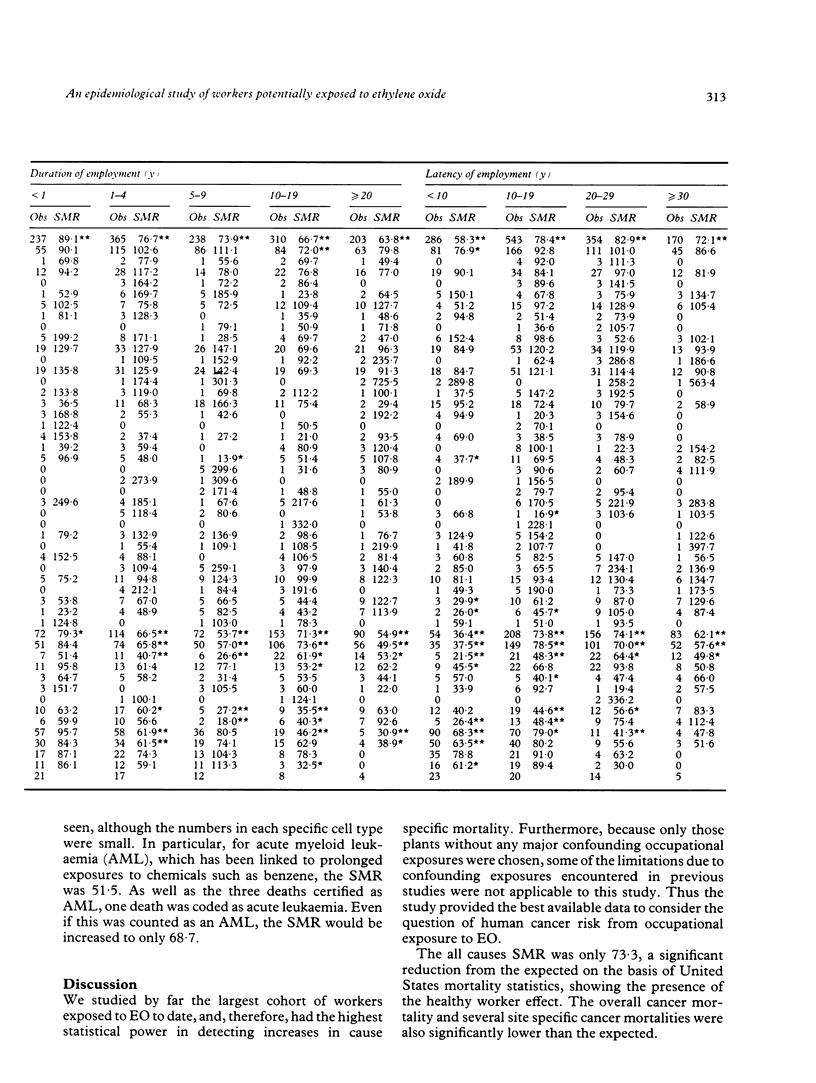
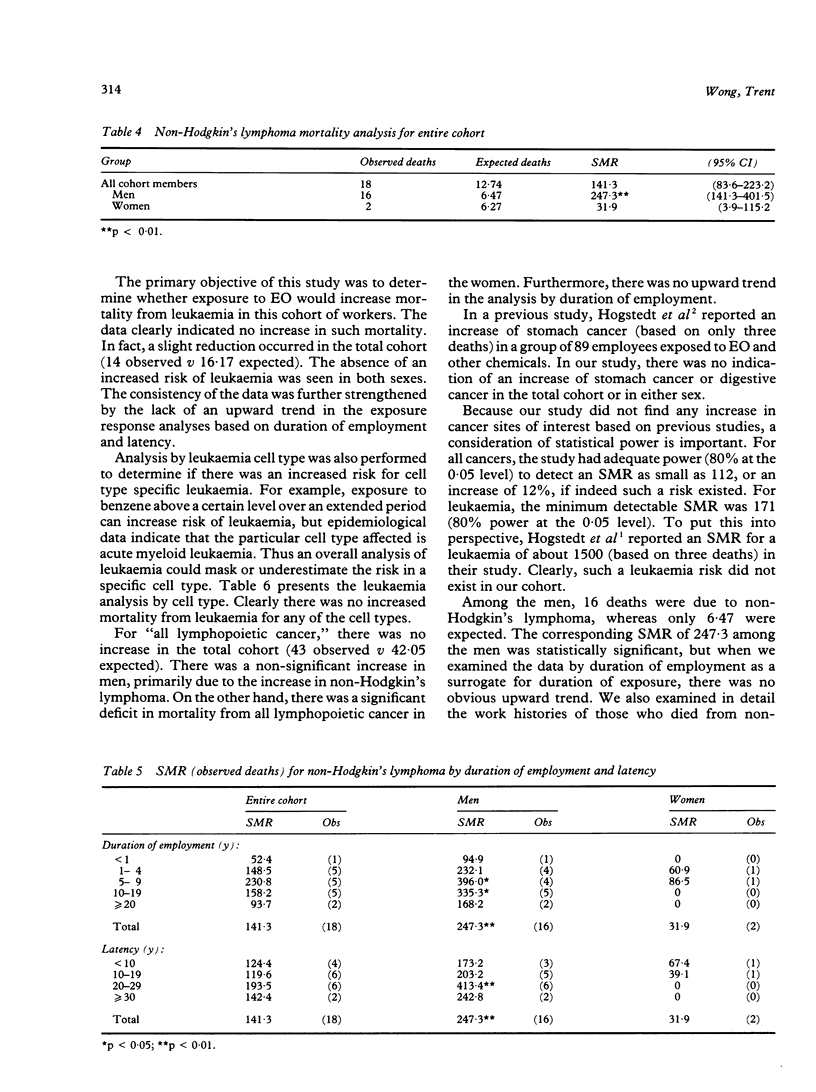
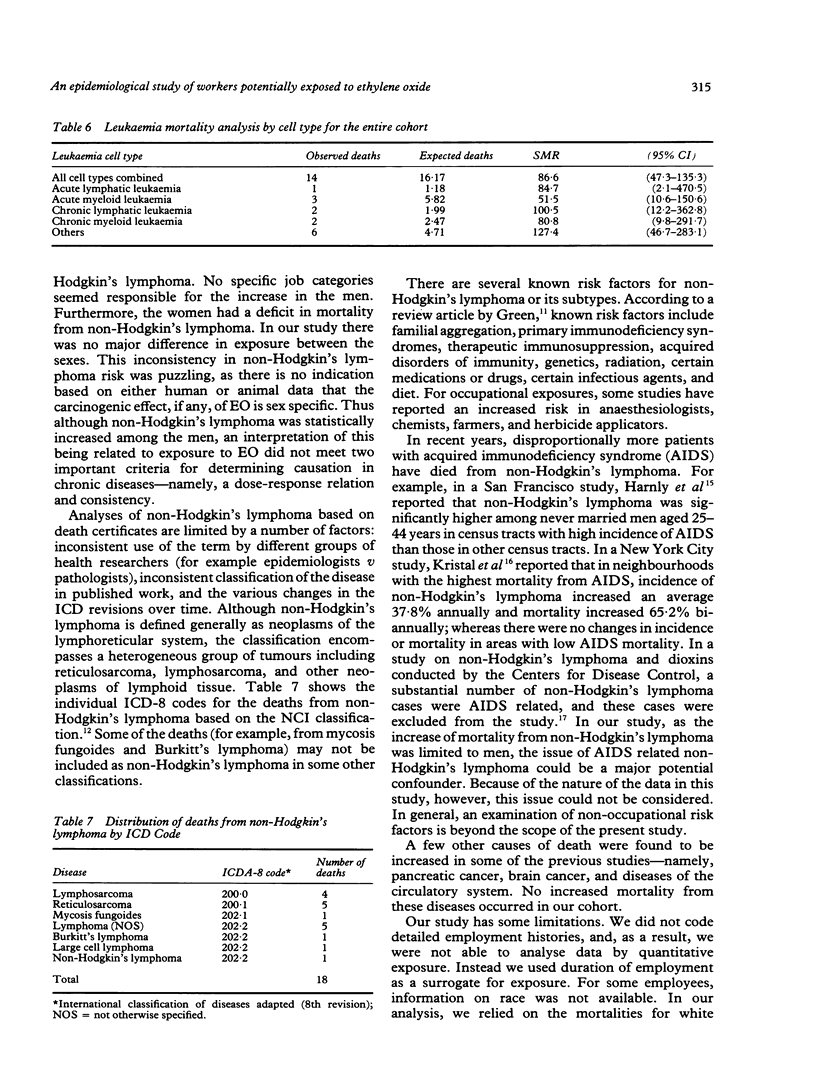
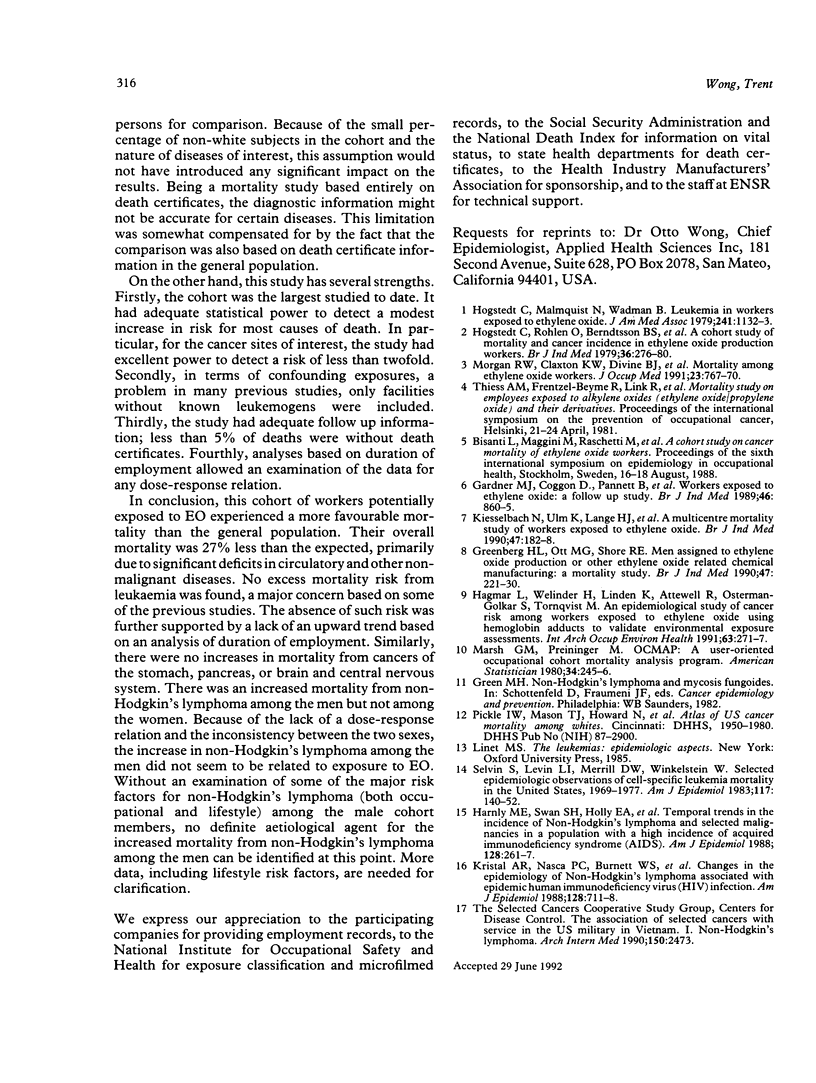
Selected References
These references are in PubMed. This may not be the complete list of references from this article.
- Gardner M. J., Coggon D., Pannett B., Harris E. C. Workers exposed to ethylene oxide: a follow up study. Br J Ind Med. 1989 Dec;46(12):860–865. doi: 10.1136/oem.46.12.860. [DOI] [PMC free article] [PubMed] [Google Scholar]
- Greenberg H. L., Ott M. G., Shore R. E. Men assigned to ethylene oxide production or other ethylene oxide related chemical manufacturing: a mortality study. Br J Ind Med. 1990 Apr;47(4):221–230. doi: 10.1136/oem.47.4.221. [DOI] [PMC free article] [PubMed] [Google Scholar]
- Hagmar L., Welinder H., Lindén K., Attewell R., Osterman-Golkar S., Törnqvist M. An epidemiological study of cancer risk among workers exposed to ethylene oxide using hemoglobin adducts to validate environmental exposure assessments. Int Arch Occup Environ Health. 1991;63(4):271–277. doi: 10.1007/BF00386377. [DOI] [PubMed] [Google Scholar]
- Harnly M. E., Swan S. H., Holly E. A., Kelter A., Padian N. Temporal trends in the incidence of non-Hodgkin's lymphoma and selected malignancies in a population with a high incidence of acquired immunodeficiency syndrome (AIDS) Am J Epidemiol. 1988 Aug;128(2):261–267. doi: 10.1093/oxfordjournals.aje.a114966. [DOI] [PubMed] [Google Scholar]
- Hogstedt C., Malmqvist N., Wadman B. Leukemia in workers exposed to ethylene oxide. JAMA. 1979 Mar 16;241(11):1132–1133. [PubMed] [Google Scholar]
- Hogstedt C., Rohlén O., Berndtsson B. S., Axelson O., Ehrenberg L. A cohort study of mortality and cancer incidence in ethylene oxide production workers. Br J Ind Med. 1979 Nov;36(4):276–280. doi: 10.1136/oem.36.4.276. [DOI] [PMC free article] [PubMed] [Google Scholar]
- Kiesselbach N., Ulm K., Lange H. J., Korallus U. A multicentre mortality study of workers exposed to ethylene oxide. Br J Ind Med. 1990 Mar;47(3):182–188. doi: 10.1136/oem.47.3.182. [DOI] [PMC free article] [PubMed] [Google Scholar]
- Kristal A. R., Nasca P. C., Burnett W. S., Mikl J. Changes in the epidemiology of non-Hodgkin's lymphoma associated with epidemic human immunodeficiency virus (HIV) infection. Am J Epidemiol. 1988 Oct;128(4):711–718. doi: 10.1093/oxfordjournals.aje.a115024. [DOI] [PubMed] [Google Scholar]
- Morgan R. W., Claxton K. W., Divine B. J., Kaplan S. D., Harris V. B. Mortality among ethylene oxide workers. J Occup Med. 1981 Nov;23(11):767–770. doi: 10.1097/00043764-198111000-00011. [DOI] [PubMed] [Google Scholar]
- Selvin S., Levin L. I., Merrill D. W., Winkelstein W., Jr Selected epidemiologic observations of cell-specific leukemia mortality in the United States, 1969-1977. Am J Epidemiol. 1983 Feb;117(2):140–152. doi: 10.1093/oxfordjournals.aje.a113524. [DOI] [PubMed] [Google Scholar]


